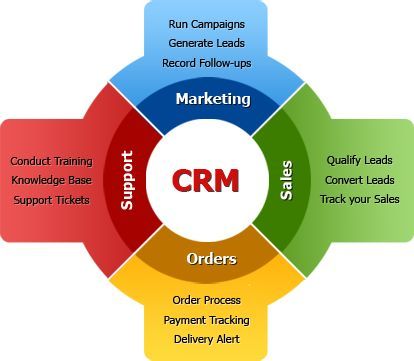
How to Train Your Team on Using CRM Effectively
Implementing a Customer Relationship Management (CRM) system is a significant step toward improving your business’s efficiency, customer service, and overall performance. However, the success of a CRM system largely depends on how well your team can use it. Training your team to use CRM effectively is crucial for maximizing its benefits. This article provides a comprehensive guide on how to train your team to use CRM effectively.
1. Understand Your CRM System
Before Training:
- Choose the Right CRM: Ensure the CRM system you choose fits your business needs and is user-friendly.
- Know Its Features: Understand all the features and functionalities of the CRM system to provide comprehensive training.
2. Develop a Training Plan
Customized Approach:
- Assess Needs: Identify the different roles in your team and tailor the training to meet their specific needs. Sales, marketing, and customer service teams might use the CRM differently.
- Set Objectives: Clearly define what you want to achieve with the training. Objectives might include understanding CRM basics, data entry accuracy, or advanced reporting features.
Structured Training Program:
- Create a Timeline: Develop a timeline for the training process, including initial sessions and follow-up sessions to reinforce learning.
- Resources: Gather training materials such as user manuals, video tutorials, and cheat sheets.
3. Use a Variety of Training Methods
Blended Learning:
- Live Workshops: Conduct in-person or virtual workshops where team members can ask questions and interact with the trainer.
- Online Tutorials: Provide access to online tutorials and webinars that team members can watch at their own pace.
- Hands-On Training: Allow team members to use the CRM in real scenarios, practicing tasks they will perform daily.
Interactive and Engaging:
- Role-Playing: Create scenarios where team members can role-play customer interactions or sales processes using the CRM.
- Gamification: Incorporate gamification elements such as quizzes or challenges to make learning more engaging and fun.
4. Focus on Key Features and Functions
Core Functionality:
- Data Entry: Train team members on how to enter and update customer data accurately.
- Task Management: Show how to create, assign, and track tasks within the CRM.
- Communication Tools: Demonstrate how to use the CRM for email marketing, call logging, and other communication tools.
Advanced Features:
- Reporting and Analytics: Teach how to generate and interpret reports to gain insights into customer behavior and sales performance.
- Automation: Explain how to set up and use automation features to streamline workflows and save time.
5. Encourage Continuous Learning and Support
Ongoing Education:
- Regular Updates: Schedule regular training sessions to keep the team updated on new features and best practices.
- Advanced Training: Offer advanced training sessions for team members who want to deepen their CRM skills.
Support System:
- Help Desk: Set up a help desk or support system where team members can ask questions and get assistance.
- Knowledge Base: Create a knowledge base with FAQs, how-to guides, and troubleshooting tips.
6. Monitor Progress and Provide Feedback
Tracking Performance:
- Monitor Usage: Use the CRM’s analytics to track how team members are using the system and identify areas where additional training might be needed.
- Feedback Loops: Collect feedback from team members about the training process and make improvements based on their suggestions.
Recognition and Rewards:
- Acknowledge Success: Recognize and reward team members who excel in using the CRM, encouraging others to improve their skills.
- Incentives: Provide incentives for team members who complete advanced training or achieve specific CRM-related goals.
7. Foster a CRM-First Culture
Leadership Role:
- Lead by Example: Ensure that leadership actively uses and advocates for the CRM system, demonstrating its importance to the team.
- Integrate into Processes: Make the CRM system an integral part of daily operations, ensuring that all customer-related activities are logged and managed through the system.
Team Buy-In:
- Communicate Benefits: Clearly communicate the benefits of using the CRM to the team, highlighting how it can make their jobs easier and more effective.
- Involve the Team: Involve team members in the process of selecting and customizing the CRM system, making them feel invested in its success.
Conclusion
Training your team to use CRM effectively is essential for maximizing the system’s benefits and achieving your business goals. By understanding your CRM system, developing a structured training plan, using a variety of training methods, focusing on key features, encouraging continuous learning, monitoring progress, and fostering a CRM-first culture, you can ensure that your team is well-equipped to leverage the CRM to its full potential. Investing time and resources into comprehensive CRM training will lead to improved efficiency, better customer service, and ultimately, a more successful business.